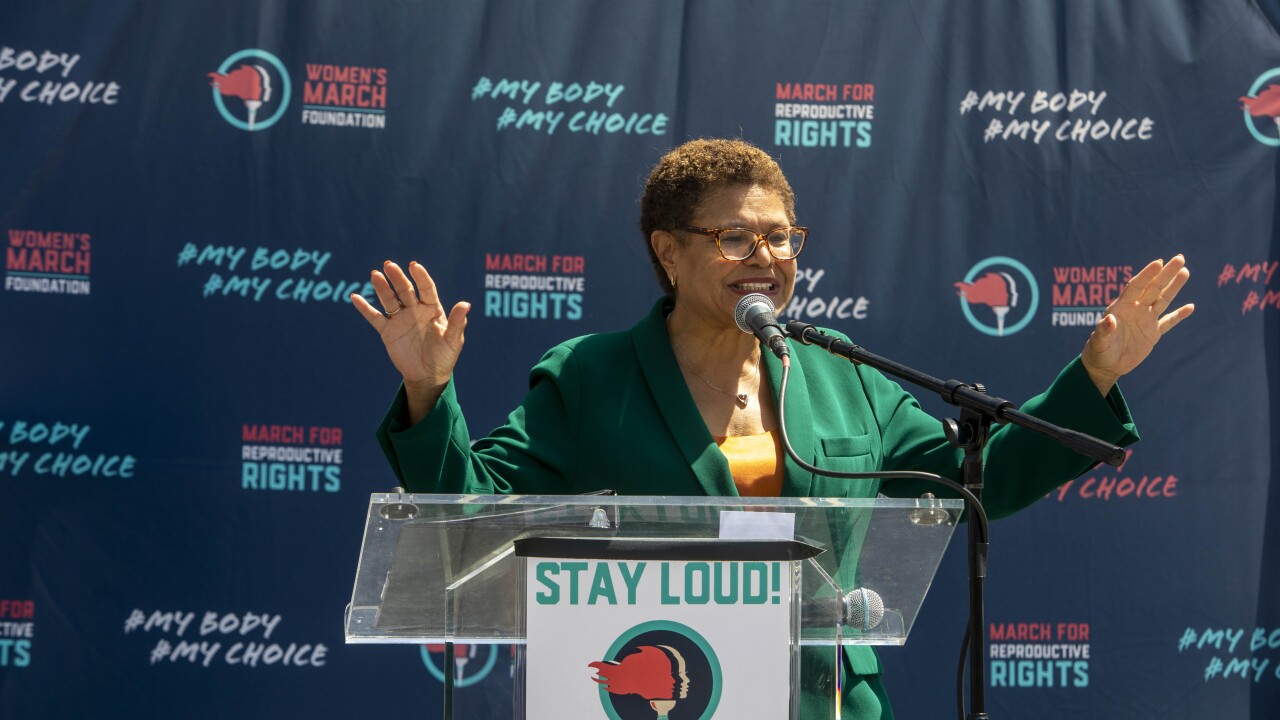

A subway line delayed over 100 years is about to open "on time."
The long-awaited, way over budget $4.5 billion Second Avenue subway corridor in New York is scheduled to begin service over the weekend, though limited at the start.
Gov. Andrew Cuomo and officials from the Metropolitan Transportation Authority expect to take a ceremonial first ride around 10:30 p.m. New Year's Eve, with the line opening to public service at noon on New Year's Day.
Cuomo over the past year has leaned heavily on the MTA, a state agency and a large municipal issuer with roughly $37 billion in debt. Throughout December, crews have worked around the clock and the governor has made frequent visits, some announced, at the four stations under construction.
"It's a rush job after
The first phase of the new line, intended to alleviate severe crowding along the Lexington Avenue corridor by serving more than 200,000 people daily, extends the Q line to a renovated station at 63rd Street and Lexington Avenue and to brand new stations at 72nd, 86th and 96th streets. The Q extends in the other direction to Brooklyn's Coney Island.
Overnight service will start Jan. 9, according to the MTA.
Fully complete, the line would stretch 8.5 miles along the East Side, from 125th Street in Harlem to Hanover Square in lower Manhattan.
Plans for a second phase, north into Harlem, depend on money that has yet to be identified.
"The bigger problem is that we were supposed to be much further along with the rest of the line," said Gelinas. "All we have are three new stops to feed into a system that can't hold any more people. We won't see the next phase anytime soon."
The MTA's 2015-2019 capital plan includes $1.5 billion for Phase 2.The MTA board has already approved the design and environmental consultant contracts for the second phase.
"It was politically impossible, it was too ambitious, too technologically challenging and too disruptive for such a densely populated area. Well, it wasn't impossible," said U.S. Rep. Carolyn Maloney, D-N.Y., who has lobbied over the years for federal funding and is asking the Federal Transit Administration to fund the $6 billion second phase under the FTA's capital investment "new starts" grant program.
The history includes three prior groundbreakings for separate portions of the line and bonds approved but not spent, or siphoned elsewhere.
According to the MTA, plans emerged in 1920 for a trunk line along the avenue as a second phase under the new Independent, or IND, subway system.
"It is interesting that nobody is left from when they first promised the line," said Gelinas. "They can't even trot out some 95-year-old person from the World War I generation."
In 1929, the city's NYC Board of Transportation proposed an $86 million Second Avenue line from Houston Street to the Harlem River. That October, however, the Wall Street stock market crashed.
World wars, recessions, financial crises and neighborhood resident and business objections kept stalling the project.
Conversation about the line resurfaced after World War II. The cost estimate in 1949 was $504 million. At the urging of Queens residents and business leaders, the blueprint a year later included a branch to that borough. The Korean War, meanwhile, drove up material costs.
In 1951, a bond issue for $500 million was approved. Transit Authority Chairman Charles Patterson, however, used all but $112 million of the bond money to maintain the existing system.
"It is highly improbable that the Second Ave. subway will ever materialize," the New York Times editorialized in 1957.
Even today, debate resounds over whether to bond for new projects or to maintain and upgrade existing service.
"It's a new project and it will benefit a number of people, but I wish they'd spend just as much energy on the basic maintenance of the system," said Howard Cure, director of municipal bond research for Evercore Wealth Management.
Elevated lines on Second and Third avenues were torn down in 1942 and 1956, respectively, in anticipation of the new line, "except they forgot to build a subway on Second Avenue," said Cuomo.
A groundbreaking took place in 1972 at East 103rd Street, though the city's fiscal crisis in 1975 – the "Ford to City: Drop Dead" days -- brought construction to a screeching halt. Workers had completed only three separate tunnel sections.
In 1995, the MTA's New York City Transit unit began the Manhattan East Side Alternatives study, intended to cope with overcrowding along Lexington Avenue, which carries the Nos. 4, 5 and 6 lines, and enhance mass transit options on Manhattan's far East Side.
In April 2006, the FTA allowed the MTA to begin the final design of the first phase of the project and the authority issued the final design contract.
Ten years later, Cuomo pushed the MTA into rush-job mode.
"There is no mistaking his priorities when he has a conversation with you," said Prendergast.
Cuomo has staked ample political capital on infrastructure, with his pushes for Tappan Zee Bridge, LaGuardia Airport and Penn Station reconstruction, to name a few.
According to Gelinas, three stations in 100 years is hardly enough.
"It's still two and a half years late," said Gelinas, citing FTA documents from 2007 that predicted a revenue service date – jargon for public opening – by mid-2014. The 2017 projection came in 2009.





